#21: ALL THE MEWS YOU CAN NEWS
Ed Jefferson is attempting to visit every Mews in Greater London. This week: the key to Robert The Bruce's heart, conveyer belts of conveyer belts, and fat trucks.

You may have noticed there has been some fairly appalling news: that’s right, Lewisham council have declared WAR on Mewses. Last week they kicked out the operators of Catford Mews, a cinema/food hall/community space operating out of Catford’s shopping centre, causing much local anguish, not least because at present it’s the only cinema in the entire borough. You can tell the situation is serious because there’s a pointless charge.org petition about it!
On one side we have Lewisham council, who say that the Really Local Group, the operator of Catford Mews owes them hundreds of thousands of pounds in arrears and have failed to come up with a satisfactory arrangement to address this. They’ve also pointed the finger at various other RLG venues which have got into financial difficulties, presumably in the vain hope that this will stop people from yelling at the council for taking the cinema away (an alternative operator is apparently being sought, but there seems to be scepticism locally that this will happen).
On the other side is the Really Local Group themselves who have suggested that the council’s statements amount to defamation - their version of events seems to be that their struggles are largely due to problems suffered by all cinemas (Covid, energy bills, Hollywood strikes, dog ate it etc) and that the council has misrepresented their attempts to resolve the financial difficulties, and has actually contributed to the problem through maintenance costs incurred by the cinema resulting from poor upkeep of the shopping centre itself. The fact that various other RLG venues have had problems is an unfortunate coincidence, things could have been turned around if it wasn’t for the evil council, etc etc.
It may be that much of what both sides say is true, but it does seems to me not to be particularly sustainable to have these kind of ‘community venues’ which one way or another appear to need significant amounts of taxpayer support, whilst at the same time being run as (at least notionally) profit-making enterprises. Also the Really Local Group’s name is quite obnoxious, how can you be local to Catford, Ealing and Nuneaton?
And what about people attempting to document every Mews in Greater London? Did anyone think about them? Will any new incarnation carry the same name or will I have to amend my Master List of Mewses? There is some hope - the venue was actually restoring the name to the space it was operating in - Catford Mews was originally the shopping centre’s indoor market area (if the pun wasn’t intentional then I don’t know what was going on), which was replaced by a Poundland circa the early 21st century before that in turn was replaced by the cinema in 2019.
The issue will of course become moot if the council does what has intended to do since 2016, i.e. demolishing the entire shopping centre, but we can always hope that this won’t happen until I’ve finished visiting all the Mewses because like all councils everywhere Lewisham has no money to do anything at all whatsoever. So it turns out everything is fine and there is nothing to worry about in the world at all!
The Mewses
#201 Trafalgar Mews, Hackney, E9

The name Trafalgar derives from the Arabic for ‘edge of the west’ - I assume like everything else called Trafalgar [something] in the UK, the name somehow ended up here as a reference to the famous battle at Cape Trafalgar where the Royal Navy blatted Napoleon, Nelson asked Hardy for a snog, etc.
What this has to do with the Mews is unclear - it was once a vinegar brewery, then a glue factory, and is now flats, workshops and a warehouse containing ‘retro clothes’ for people who want dress like it’s still 2002 for some reason.
#202 Tower Mews, Hackney, E5

Established as the Tower Brewery in 1882, aided by a well on the premises that produced a supposedly inexhaustible supply of very cold water, a great advantage in the brewing process as it removed the necessity of providing artificial cooling. The company’s incorporation notice boasts that it “bears most favourable comparison with the best water at Burton-on-Trent”. Brewery, well, favourably comparable water all gone in place of flats. Shame, could have at least let someone open a ‘heritage tap room’ that Mews explorers could stop for a pint in.
#203 Symington Mews, Hackney, E9
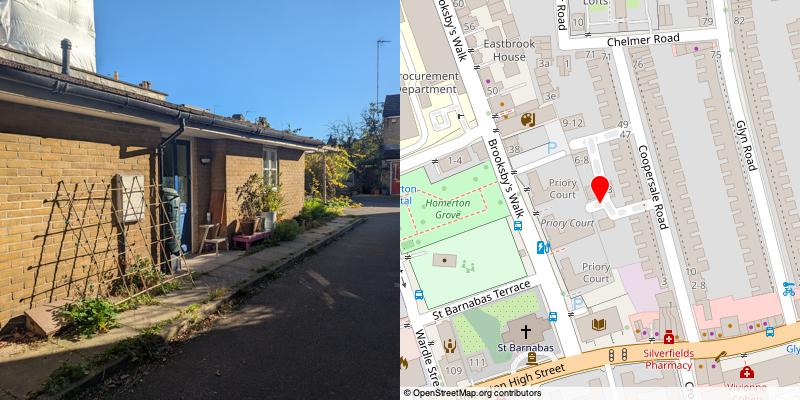
In-fill development on the site of a former metal works. ‘Symington’ derives from one of three Scottish villages named for Simon Locard, a 13th century Scottish knight alleged (mostly by his descendants) to have accompanied the bloke who carried Robert The Bruce’s heart to Jerusalem, carrying the key to the box they kept the heart in which is a great as slightly lame family claims go. I’m descended from someone who once sold Henry the Eighth’s horse a book token, actually.
#204 Clifden Mews, Hackney, E5

Early 2000s housing development on what was a generic yard. It once contained a weighbridge, which is a massive set of scales to find out whether your truck is fat, and was latterly used to lock up naughty cars.
#205 Clockwork Mews, Hackney, E5

Initially there appear to be little reason for the name given to this 2014 residential development on land that originally housed a sawmill, then later a dairy. Maybe they had clockwork milk? Cyberpunk?
No - it turns out the name derives from it being a spin-off venture of the Clockwork Pharmacy chain - the logo of which is an orange and blue pill, here somewhat extended on one side because the word Mews is a lot shorter than the word Pharmacy. I suppose the houses are at least kind of interesting looking if you like that sort of thing, but you are one step away from living on Superdrug Mews.
#206 Tranby Mews, Hackney, E9
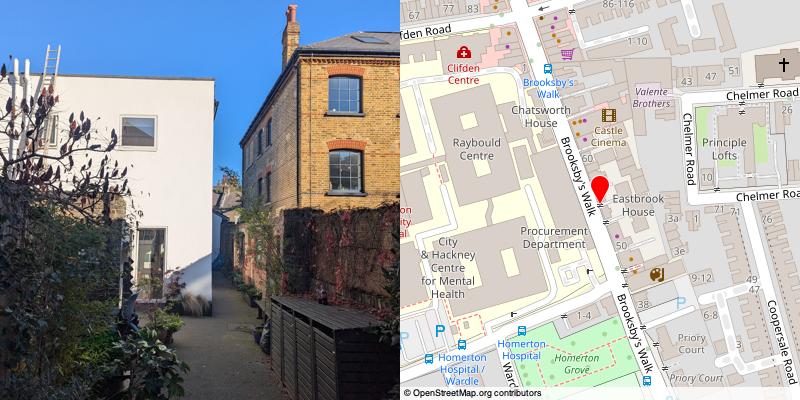
The fortunes of the area around Brooksby’s Walk have been somewhat variable - mid-19th century maps show lots of well-to-do houses with well-to-do gardens. Then in the 1870s someone decided it would be a good idea to build a fever hospital on the land to the west (now Homerton Hospital) and the residents of the well-to-do houses all ran away. By the mid-20th century what had been posh gardens was occupied by a clothing factory, before things swung back the other way and people were desperate to live in Hackney - and hey, maybe living close to the hospital could be considered a bonus these days! Hence: Tranby Mews, some fairly functional looking houses. Someone got planning permission to build a ‘study/home work space’ on the top of one of them, which I’m not saying is code for ‘very crap flat’, but it does have its own bathroom and kitchen? They don’t seem to have actually built it yet, but keep an eye out if you want to pay thousands of pounds a month to live in a weird attic.
#207 Eastbrook Mews, Hackney, E9
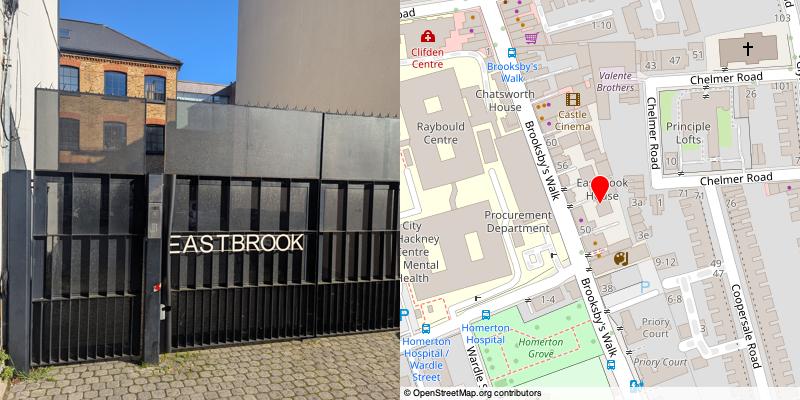
I mean more or less see above - Eastbrook Mews is one of the buildings in a development behind Brooksby’s Road. Specifically it’s behind a fairly standard looking off-licence that has been forced to include ‘Organic Products’ in its list of offerings, because of gentrification.
#208 Ryder Mews, Hackney, E9

Mid-90s infill housing development built behind buildings off Homerton High Street - according to planning documents built by the AN VIET HOUSING ASSOCIATION, established in 1988 to meet the needs of Vietnamese refugees in London - particularly in light of the UK government’s then policy of dispersion1 which meant refugees could find themselves separated from others in the same situation who they might otherwise form a community with. It was at one point a subsidiary of the Ujima housing association (of which more below) but survives as Lien Vet, part of Islington and Shoreditch Housing Association.
#209 Ashanti Mews, Hackney, E8
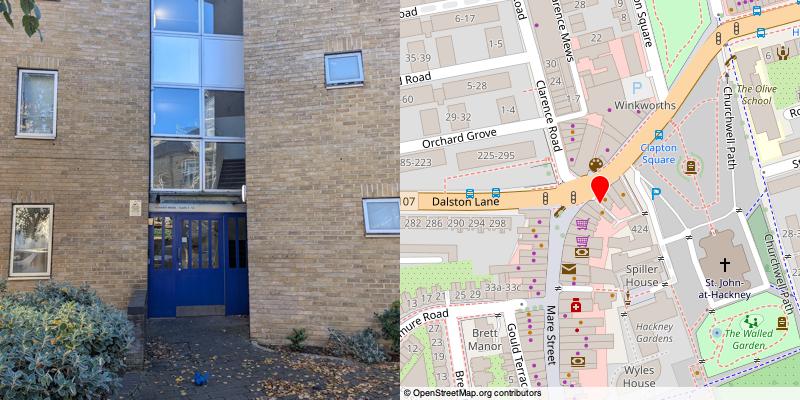
Apartment blocks built in the early 2000s by the Ujima housing association. Ujima was set up in the 1970s as an advice service that helped homeless black people in London find accommodation, and by the time Ashanti Mews was built was viewed as a huge success, providing thousands of homes in London and beyond. Unfortunately the eventual mark it would leave on history was to become the first housing association in the UK ever to go bust, after some new management attempted a huge expansion that left it with debts it was unable to pay (as well as leaving a lot of questions for the sector’s (then) regulator, the Housing Corporation).
Long before all this it was known as the Fourways works (because of the nearby road junction) and was used for motor repair until the second world war, when, in the face of suddenly reduced demand, the owner turned it into a factory manufacturing conveyor belts. Where did the first conveyor belt manufacturing factory get its conveyor belts?
#210 Clarence Mews, Hackney, E5
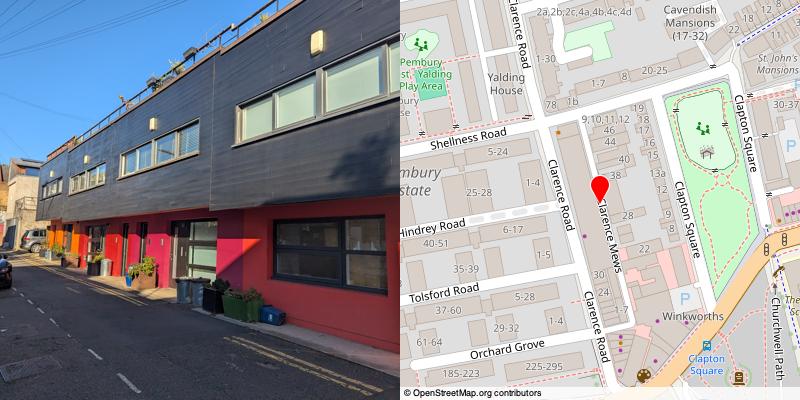
Originally an actual Mews, was by the early 21st century quite run down and considered to be ‘a problem’, i.e. a good place to go if you wanted to do a crime/have a crime done to you. Fortunes were turned around when an architect who lived in one of the houses the Mews once served got together with her neighbours to buy and redevelop a chunk of it into live/work units2 - the idea being that by giving it both a residential and working population it would be more frequently used and thus ne’er-do-wells would go elsewhere to ne’er-do-well. As of 2024 the Mews as a whole is, visually, at least, a bit of a mixed bag, but a few other properties have been redeveloped and crime stats are apparently a lot better than they once were.
One building is occupied by the designer Cressida Bell, who makes expensive lamps that your fiancée buys and then your cats try to destroy at every opportunity. For example.
Mewses Visited So Far: 210/2380
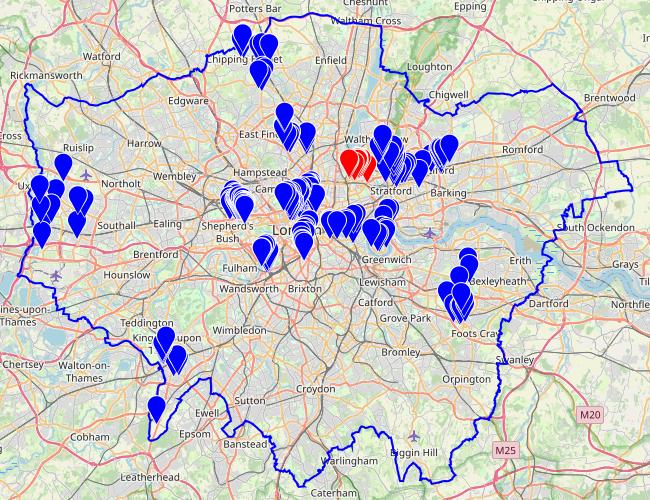
In this context this was specific to Vietnamese refugees - a similar policy has been applied since 1999 to all refugees, with the supposed rational of trying not to over-burden areas around entry points to the country, and also to act as a deterrent (on the basis that you might be sent to live somewhere crap), which is apparently important because lots of the British electorate read racist newspapers. ↩
This involved a bit of a fight with the council, and live/work developments continue to be contentious - it’s been suggested the main purpose is often to circumvent planning requirements for e.g. affordable housing, as once built making sure that the ‘work’ bits are only used for work can be challenging (councils have lost legal cases about). ↩
Add a comment: